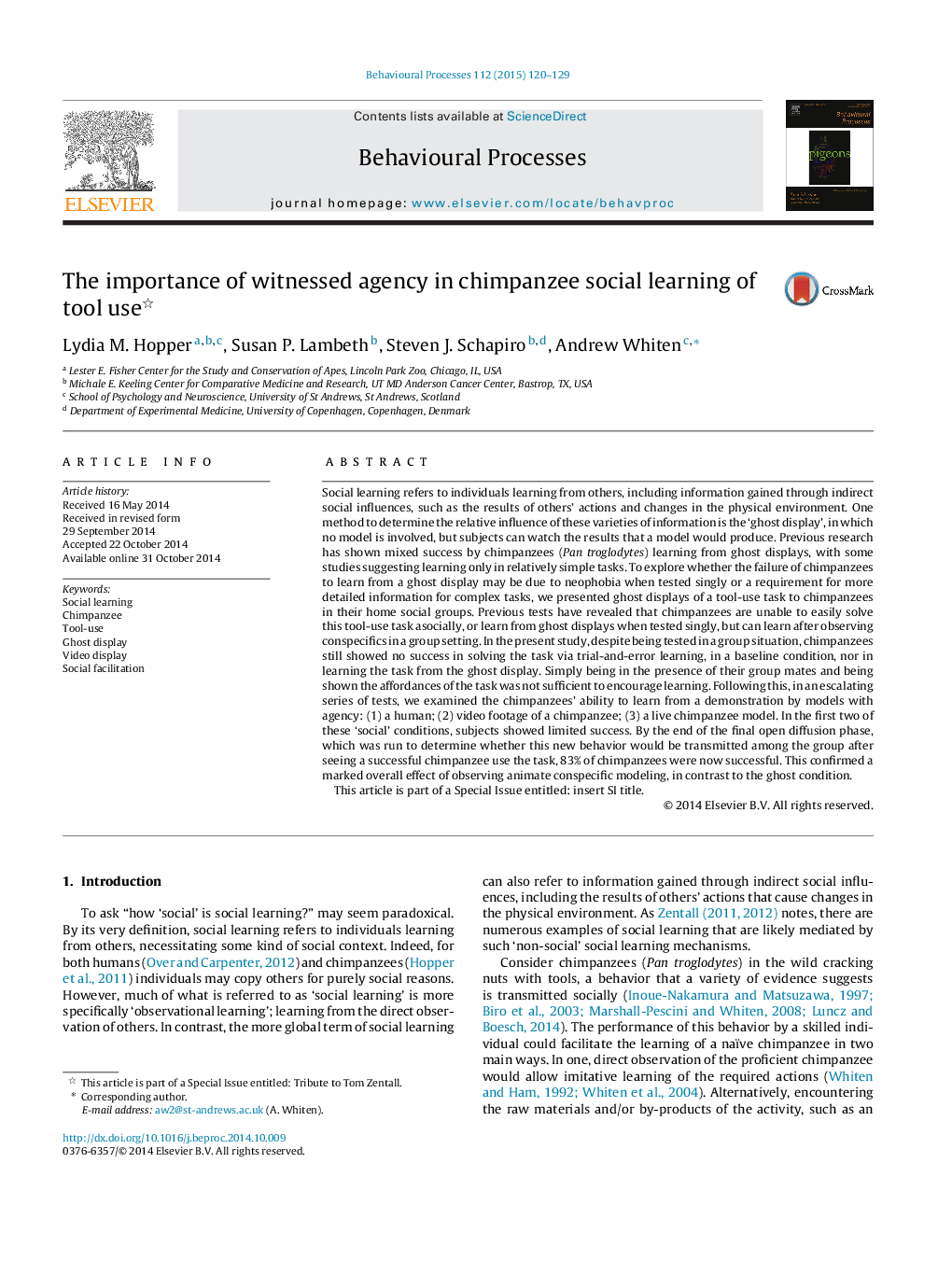| کد مقاله | کد نشریه | سال انتشار | مقاله انگلیسی | نسخه تمام متن |
|---|---|---|---|---|
| 2426642 | 1553168 | 2015 | 10 صفحه PDF | دانلود رایگان |
• Chimpanzees did not learn a complex tool-use task from a ghost display.
• Being shown the affordances of the task was not sufficient even with social support.
• The majority of chimpanzees learnt from observing a live conspecific model.
• Other forms of model with agency were also explored (video, human demo).
Social learning refers to individuals learning from others, including information gained through indirect social influences, such as the results of others’ actions and changes in the physical environment. One method to determine the relative influence of these varieties of information is the ‘ghost display’, in which no model is involved, but subjects can watch the results that a model would produce. Previous research has shown mixed success by chimpanzees (Pan troglodytes) learning from ghost displays, with some studies suggesting learning only in relatively simple tasks. To explore whether the failure of chimpanzees to learn from a ghost display may be due to neophobia when tested singly or a requirement for more detailed information for complex tasks, we presented ghost displays of a tool-use task to chimpanzees in their home social groups. Previous tests have revealed that chimpanzees are unable to easily solve this tool-use task asocially, or learn from ghost displays when tested singly, but can learn after observing conspecifics in a group setting. In the present study, despite being tested in a group situation, chimpanzees still showed no success in solving the task via trial-and-error learning, in a baseline condition, nor in learning the task from the ghost display. Simply being in the presence of their group mates and being shown the affordances of the task was not sufficient to encourage learning. Following this, in an escalating series of tests, we examined the chimpanzees’ ability to learn from a demonstration by models with agency: (1) a human; (2) video footage of a chimpanzee; (3) a live chimpanzee model. In the first two of these ‘social’ conditions, subjects showed limited success. By the end of the final open diffusion phase, which was run to determine whether this new behavior would be transmitted among the group after seeing a successful chimpanzee use the task, 83% of chimpanzees were now successful. This confirmed a marked overall effect of observing animate conspecific modeling, in contrast to the ghost condition.This article is part of a Special Issue entitled: insert SI title.
Journal: Behavioural Processes - Volume 112, March 2015, Pages 120–129
